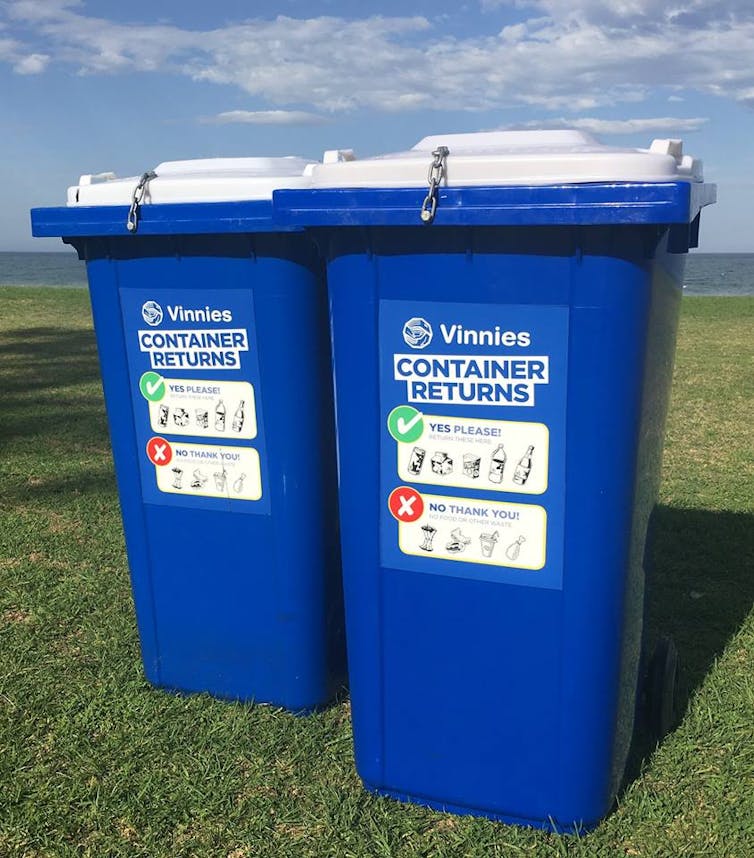Involving kids in making schools sustainable spreads the message beyond the classroom
- Written by Belinda Gibbons, Senior lecturer, University of Wollongong
The recent student-led climate protests reflect the need for schools to provide opportunities to nurture their students’ global, environmentally conscious minds. Modern education isn’t only about teaching kids the traditional concepts of say, English and Mathematics – it is also about helping to develop confident adults and informed citizens.
The curriculum goes some way to doing this. The NSW geography curriculum for years 11 and 12, for instance, suggests kids learn about responsible values and attitudes towards sustainability. But it doesn’t specify how these attitudes and values should be taught, leaving it up to the schools and teachers to design the methods.
Read more: Ever wondered what our curriculum teaches kids about climate change? The answer is 'not much'
Research shows kids are more engaged when they’re actively involved in their learning, rather than learning passively through listening or reading.
Schools can engage students in being environmentally conscious by taking steps to become more sustainable themselves.
Our faculty helps high schools develop initiatives to meet the Sustainable Development Goals. We recently spoke to principals of three schools in our region to see how they’re teaching their students sustainability while taking steps themselves to lower their energy generation, decrease waste and increase their recycling.
Students saving energy
Most schools in our region (the Illawara) have solar panels. In fact, more than 1,400 schools across NSW have had solar panels installed since 2010 to generate at least some of their electricity. Under a project that ended in 2013, around 60% of Australian schools had solar panels installed.
Dapto High School’s agriculture, science and maths classrooms were one of the first in Australia to pilot the Hivve sustainability classroom. This is an initiative by the Australian government and the Australian Renewable Energy Agency and has been used by schools in NSW, QLD and the NT.
The sustainable classroom uses solar energy, and has a monitor in the classroom so kids and teachers can see how much energy they’re using. It also tells the staff and students how their school’s energy consumption compares with other similar schools.
The school’s principal and a team of so-called “green student warriors” can also get this information sent to an app on their phone. So they can see from home if air conditioning or lights have been left on in the gym after a game, for instance.
Accessing live energy data also helps the school manage events requiring a lot of energy, such as air-conditioning in summer. This way when students are not indoors, they can switch off the air-con to reduce waste and excess costs.
Waste management audits
At Edmond Rice College, students have been given the freedom to organise one of the first local student-led sustainability conferences. Students came together from local public and private schools to learn, discuss and tackle the environmental challenges in their communities.
This day involved presentations from young climate activists, as well as teams working on how to eliminate plastic water bottles. The day ended with school students sharing their top environmental actions.
Read more: Ignoring young people's climate change fears is a recipe for anxiety
The school’s environment team also recently conducted their second waste management audit. Students and teachers recorded and collected waste from the playground and general waste bins, as well as the newly implemented blue paper bins.
 Holy Spirit College had Vinnie’s blue bins installed.
Vinnie's Wollongong/Facebook
Holy Spirit College had Vinnie’s blue bins installed.
Vinnie's Wollongong/Facebook
They did this to see if bins were used for their intended purposes and whether any of the bins were contaminated with waste that didn’t need to be there. Students were tasked with sorting and recording waste into categories and weighing and comparing it to previous years of waste.
They concluded less waste was being put into landfill and more was being recycled. They found due to the blue paper bins, the school had recycled 100kg of paper had that year.
Recycling action plan
Holy Spirit College engages in a variety of initiatives alongside their student environment group. The school put out a call for students interested in being part of the group. Since then, around 40 members have joined.
The environmental group has been in charge of installing Vinnie’s blue bins around the school to recycle plastic bottles and cans. They also aim to raise awareness of sustainability and recycling through different activities such as workshops for students to make reusable tote bags out of old t-shirts.
Bettina Grimston, the director of the environment group, said she was amazed with the students’ passion to “save the planet”. She agreed “there’s no planet B”, and it’s the duty of educators to help students be aware of their actions.
Read more: Students striking for climate action are showing the exact skills employers look for
Authors: Belinda Gibbons, Senior lecturer, University of Wollongong



